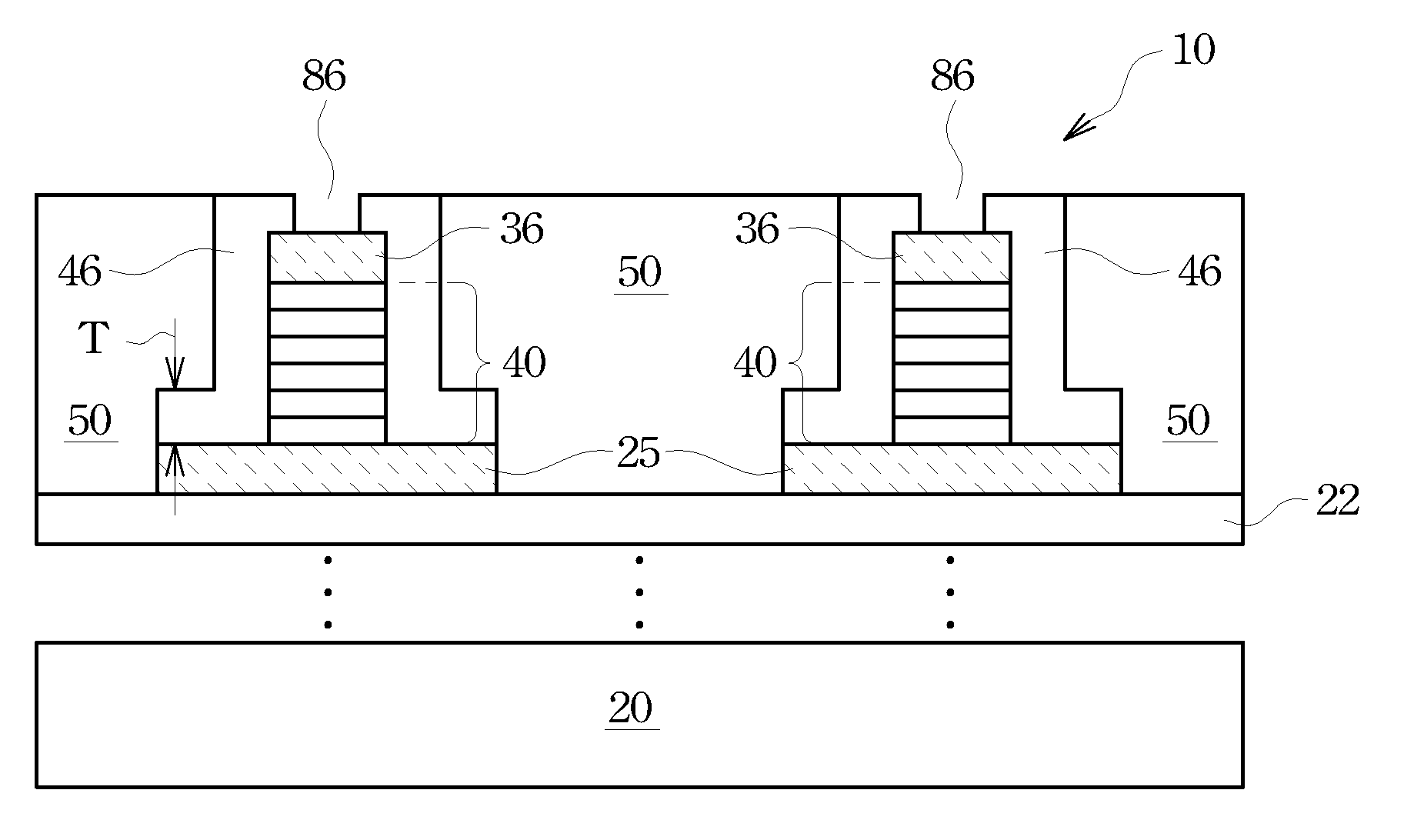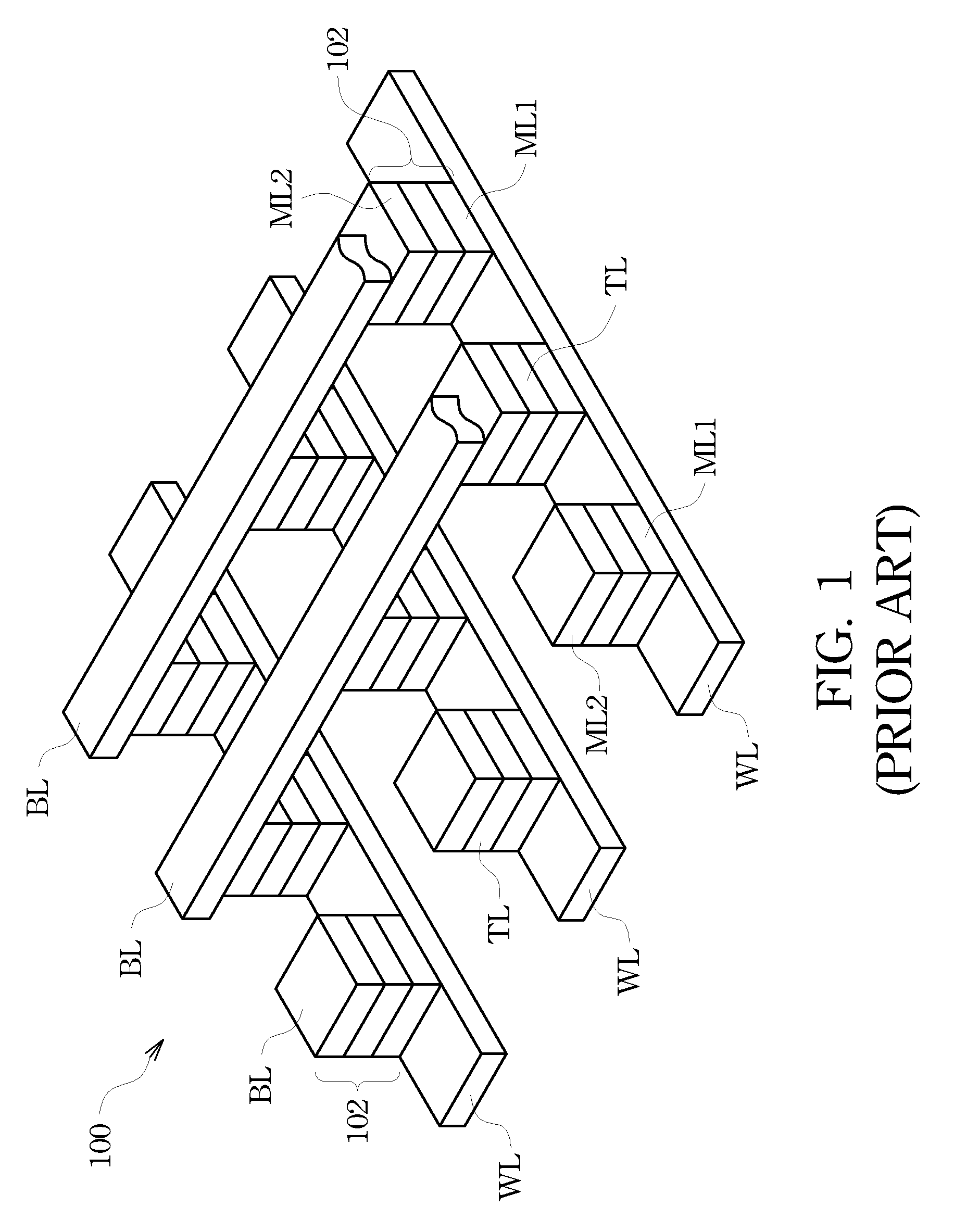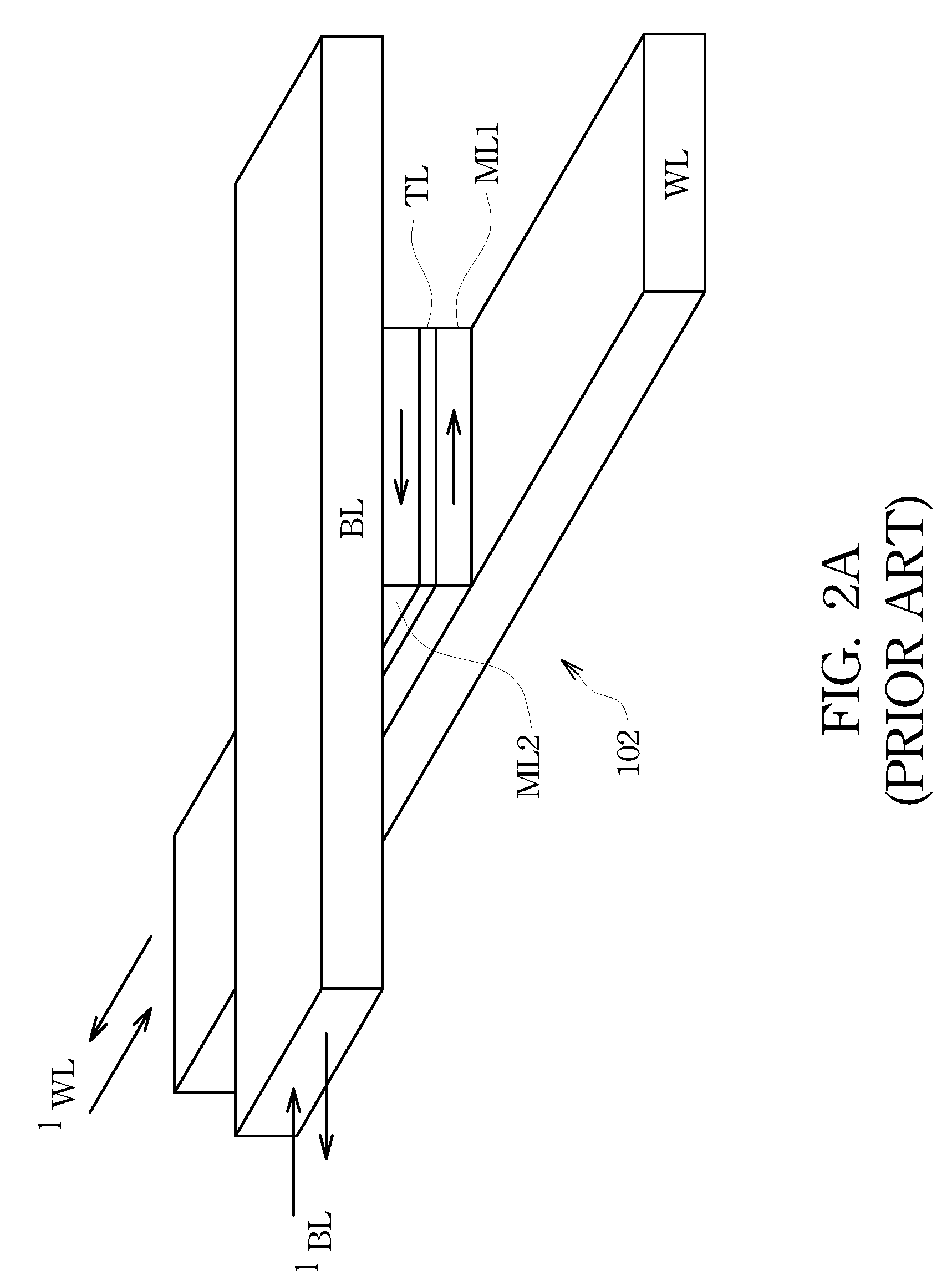In-Situ Formed Capping Layer in MTJ Devices
a technology of mtj and capping layer, which is applied in the field of magnetic resonance random access memory (mram) devices, can solve the problems of adversely affecting the performance of mtjs b>102, and the effect of inherent stresses of mtjs b>102/b> on their performance, and achieves the effect of substantially eliminating the adverse oxidation of mtj cells
- Summary
- Abstract
- Description
- Claims
- Application Information
AI Technical Summary
Benefits of technology
Problems solved by technology
Method used
Image
Examples
Embodiment Construction
[0023]The making and using of the presently preferred embodiments are discussed in detail below. It should be appreciated, however, that the present invention provides many applicable inventive concepts that can be embodied in a wide variety of specific contexts. The specific embodiments discussed are merely illustrative of specific ways to make and use the invention, and do not limit the scope of the invention.
[0024]A novel magnetic tunnel junction (MTJ) and methods of forming the same are provided. The intermediate stages of manufacturing embodiments of the present invention are illustrated. Throughout the various views and illustrative embodiments of the present invention, like reference numbers are used to designate like elements.
[0025]FIG. 3 illustrates production tool 200 for forming the embodiments of the present invention. Production tool 200 includes transfer chamber 202 for transferring wafers, etching chambers 204 and 206 for etching components on the wafers, and depositi...
PUM
 Login to View More
Login to View More Abstract
Description
Claims
Application Information
 Login to View More
Login to View More - R&D
- Intellectual Property
- Life Sciences
- Materials
- Tech Scout
- Unparalleled Data Quality
- Higher Quality Content
- 60% Fewer Hallucinations
Browse by: Latest US Patents, China's latest patents, Technical Efficacy Thesaurus, Application Domain, Technology Topic, Popular Technical Reports.
© 2025 PatSnap. All rights reserved.Legal|Privacy policy|Modern Slavery Act Transparency Statement|Sitemap|About US| Contact US: help@patsnap.com



